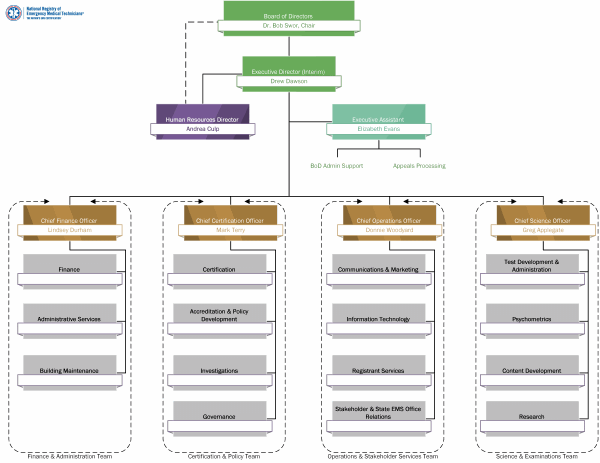"In addition to streamlining workloads, we have improved operations by eliminating redundancies to provide more efficient service to our customers. We will continue to improve engagement and transparency for our stakeholders and partners, while streamlining the certification process for our registrants " said Interim Executive Director Drew Dawson. "We believe that by striving to maintain integrity as an organization, we also help to maintain the integrity of the EMS profession."
The Certification and Policy Team, led by Chief Certification Officer Mark Terry, is responsible for administering certification policies and processes such as eligibility, re-registration and career re-entry. The team includes business functions such as application evaluation, legal review, audits, investigations, policy development and accreditation. The core mission of this team is consistent application of certification policies.
The Finance and Administration Team, led by Chief Finance Officer Lindsey Durham, is responsible for managing the business administration functions of the Registry. The team includes business processes such as finance, contracts, sales fulfilment and administrative support. The core mission of this team is prudent and sustainable business operations.
The Operations and Stakeholder Relations Team, led by Chief Operations Officer Donnie Woodyard, is responsible for stakeholder relationships and communications. The team includes business functions such as registrant services, information technology, communications, marketing, and stakeholder relations. A new cross-functional Registrant Services Contact Center is being established within this team, and new liaisons have been named for focused relationships with State EMS Offices, EMS Educators, EMS Stakeholders, EMS agencies, and federal/military agencies. The core mission of this team is proactive communications to support the EMS community.
The Science and Examinations Team, led by Chief Science Officer Greg Applegate, is responsible for research and examinations related processes. The team includes the Research Fellowship program, test content development for both cognitive and psychomotor exam, test administration and psychometrics. The core mission of this team is to advance the understanding of EMS through evidence-based research and to provide valid and reliable assessments of competency.
"The nation trusts the National Registry to certify safe and competent EMRs, EMTs, AEMTs, and Paramedics.” said Dawson. The new structures better align leadership and team structures with the key business processes and responsibilities of a certifying agency standards. This restructuring will allow the National Registry to provide better service to our constituents."
New National Registry Team Structure


About the National Registry of Emergency Medical Technicians
Since its founding in 1970, the National Registry of Emergency Medical Technicians (NREMT) has offered the nation assurance that the men and women providing emergency treatment in the out-of-hospital setting are capable of providing the care that patients and their loved ones deserve. As the Nation’s EMS Certification organization, the National Registry provides psychometrically-valid proof of entry-level competence for Nationally Certified EMS personnel through rigorous cognitive and psychomotor examinations. National EMS Certification is offered at four levels and must be maintained biennially by demonstrating continued education and skills competence. To date, the National Registry has certified more than 1.8 million EMS professionals.
###
Media Contact:
Shane Cartmill
Communications & Marketing Manager
scartmill@nremt.org


